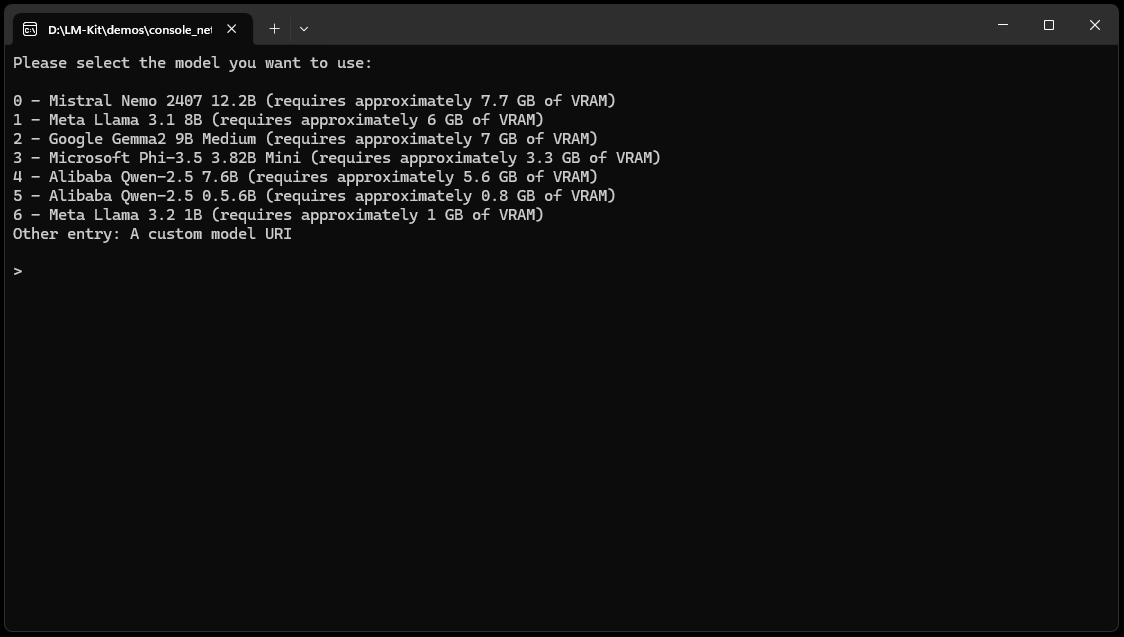Introduction
In today’s data-rich world, extracting the essence from massive amounts of text is no easy task. With mountains of documents, articles, and reports to sift through, the need for efficient and precise keyword extraction is more critical than ever. That’s where LM-Kit’s new Keyword Extraction engine steps in—bringing together on-device processing, cutting-edge algorithms, and tiny language models (LLMs) that run swiftly on standard CPUs. The result? High-performance keyword extraction that’s both resource-friendly and fast, without sacrificing accuracy.
What Is Keyword Extraction?
Keyword extraction is a natural language processing (NLP) technique designed to identify the most important words or phrases from a piece of text. Instead of manually combing through lengthy documents to pinpoint key ideas, keyword extraction tools handle the heavy lifting—automatically surfacing terms that encapsulate the main themes. Whether you’re analyzing news articles, research reports, user reviews, or any other text source, keyword extraction provides a concise and meaningful summary of the core content.

Why Keyword Extraction Matters
Accelerated Topic Identification
As the volume of textual data multiplies, manually identifying central concepts becomes impractical. Automated keyword extraction streamlines this process, guiding your team toward immediate insights and informed decision-making.
Enhanced Search and Discovery
By spotlighting the critical terms in a document, keyword extraction refines search results. Instead of surfacing loosely related documents, your system can pinpoint content that truly aligns with user queries—maximizing relevance and user satisfaction.
Effortless Content Curation
Editors and content strategists can classify and organize vast content libraries more efficiently. Automated keyword extraction forms accurate topic clusters, improving recommendations, curation strategies, and overall content workflows.
Informed Decision-Making
Identifying key themes within large datasets reveals patterns and trends. This knowledge can guide strategic decisions in market analysis, competitive intelligence, and product development, ultimately increasing your business’s agility and foresight.
Precision Personalization
Understanding the main themes in user-generated content, reviews, or feedback allows you to deliver more tailored experiences. Use extracted keywords to power personalized recommendations, target content to user interests, and enhance overall engagement.
LM-Kit’s Secret Sauce: Tiny Models, CPU Processing, and Dynamic Sampling
What sets LM-Kit’s Keyword Extraction apart from other solutions?
Tiny LLMs, Big Results
LM-Kit’s engine can leverage compact language models that run efficiently on standard CPUs. While traditional generative AI pipelines often demand powerful GPU servers or cloud-based infrastructures, LM-Kit lets you maintain fast, local processing right on your machine. By consuming tiny models, you preserve system resources and minimize latency—all without sacrificing the accuracy that matters for extracting meaningful keywords.
Innovative Text Processing Algorithms for Large Input
The Keyword Extraction engine is designed to handle large bodies of text with an emphasis on low resource consumption and high-speed performance. Cutting-edge text processing algorithms ensure that even lengthy documents are handled swiftly, enabling you to scale from small blog posts to entire research collections.
Dynamic Sampling Technology for Reduced Error and Increased Speed
LM-Kit’s Keyword Extraction engine integrates Dynamic Sampling technology, a game-changer for achieving high precision and speed from smaller models. Dynamic Sampling intelligently guides the extraction process, reducing errors and helping the model zero in on the most relevant terms more efficiently. This optimization not only preserves accuracy but also speeds up extraction times, all while consuming fewer computing resources.
Getting Started with Keyword Extraction
LM-Kit’s Keyword Extraction is incredibly simple to implement into your .NET applications. Start by choosing a model—either from LM-Kit’s pre-trained selection or your own custom model URI. Then, instantiate the KeywordExtraction class, configure parameters like KeywordCount and MaxNgramSize, and call ExtractKeywords() with your input text.
Quick Code Sample:
// Initialize the KeywordExtraction engine with a given model:
LLM model = new(new Uri("https://huggingface.co/lm-kit/llama-3.2-1b-instruct.gguf/resolve/main/Llama-3.2-1B-Instruct-Q4_K_M.gguf"));
KeywordExtraction extractor = new(model)
{
KeywordCount = 5,
MaxNgramSize = 3
};
// Extract keywords from sample text:
var keywords = await extractor.ExtractKeywordsAsync(
File.ReadAllText("ai-blog-article.txt")
);
// Print the extracted keywords:
foreach (var keyword in keywords)
{
Console.WriteLine(keyword.Value);
}
Within seconds, the engine processes the text—either leveraging tiny models on your CPU for broad compatibility or automatically taking advantage of a GPU if one is available. In both scenarios, the Keyword Extraction engine maintains a high level of accuracy and speed, identifying keywords like “artificial intelligence” and “machine learning” with remarkable efficiency.
Keyword Extraction Demo: See It in Action
The Bottom Line
LM-Kit’s Keyword Extraction sets a new standard for efficient, accurate, and on-device NLP. By harnessing tiny LLMs that run seamlessly on CPUs, employing innovative text processing algorithms, and leveraging Dynamic Sampling to reduce error and speed up computations, LM-Kit ensures that you can extract the key concepts hidden within your textual data—no matter the size—quickly and with minimal overhead.
If your use case calls for faster insights, enhanced search relevancy, streamlined content curation, or more informed strategic decisions, LM-Kit’s Keyword Extraction has you covered. Embrace the power of tiny models, blazing-fast performance, and cutting-edge NLP innovations to transform how you handle large-scale text analysis.

